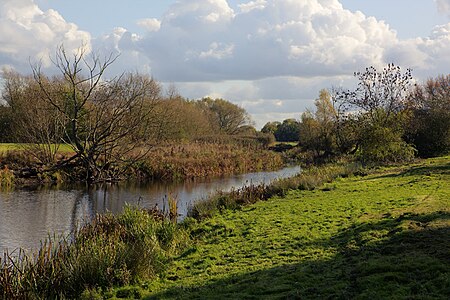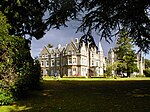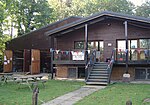Langham Pond
Sites of Special Scientific Interest in Surrey

Langham Pond is a 26.7-hectare (66-acre) biological Site of Special Scientific Interest north of Egham in Surrey.The pond and its surrounding alluvial meadows on chalk represent a habitat unique in southern England. The pond is the remains of an oxbow lake, formed when a meander of the River Thames was bypassed. The pond contains all four British duckweeds, three nationally scarce plants and a species of fly which has been found nowhere else in Britain, Cerodontha ornata.
Excerpt from the Wikipedia article Langham Pond (License: CC BY-SA 3.0, Authors, Images).Langham Pond
Cooper's Hill Lane, Borough of Runnymede
Geographical coordinates (GPS) Address Nearby Places Show on map
Geographical coordinates (GPS)
| Latitude | Longitude |
|---|---|
| N 51.438 ° | E -0.56 ° |
Address
Cooper's Hill Lane
Cooper's Hill Lane
TW20 0LG Borough of Runnymede
England, United Kingdom
Open on Google Maps








